Matador Network's Blog, page 631
July 8, 2021
8 LGBTQ outdoor resorts that put the ‘camp’ in camping

Camp can mean a number of things to queer folks. It’s a word that demands context. Is it John Muir lighting a fire or Liberace lighting up a stage? Is it Cheryl Strayed’s Wild or Shelley Long’s Troop Beverly Hills?
“Camp is the spirit of extravagance,” writes Susan Sontag in her famous 1964 essay on the subject. Camp is also the spirit of simplicity, as Henry David Thoreau outlines in the dreamy prose of Walden.
So which is it? Camp! or camp?
This year, it’s a little bit of both as queer American travelers are breaking down the binary by donning Patagonia drag, pitching tents, and shirking big cities for a new kind of vacation destination: LGBTQ campgrounds.
After a year of pandemic-induced cabin fever, it’s no wonder Americans are antsy to get campy. Outdoor escapes provide a much-needed cure. According to Kampgrounds of America’s annual North American Camping Report, over 10 million people camped for the first time in 2020, citing the health crisis as a critical factor in their decision-making process.
This year, camping is shaping up to be busier than ever. The e-commerce company Pattern, which tracks consumer behavior, found that demand for camping tents was up 97 percent compared to this time last year and up 85 percent from 2019. And as popularity booms, the demographics of who’s camping is starting to change, too.
“The average camper is evolving,” states the 2021 North American Camping Report, “and with it, we are seeing more people from backgrounds of all types finding their own space in the great outdoors.”

Photo: Honcho/Facebook
For LGBTQ travelers, the influx of curious campers has caused an increased demand for queer-centric tent retreats. Tickets to Honcho, a queer music festival where attendees spend the weekend roughing it in rural Pennsylvania, sold out within minutes of going on sale earlier this year. Weekend sites at The Woods Campground, a seasonal gay resort in the Poconos Mountains, went just as fast when bookings opened in March. The summer’s busiest weekends will draw roughly 2,000 visitors to the grounds.
This newfound camping craze coincides with a recent cultural shift away from iconic queer spaces like urban gayborhoods and gay bars. Camping, in many ways, is the antithesis of these places. At a queer campground, the honking horns of big cities are replaced with birdsong, and the blaring music of packed bars is swapped with the hum of crackling campfires. Campsites, often tucked into remote corners with spotty cell service, encourage disconnecting from digital devices and reconnecting with nature. It’s egalitarian in its affordability, too. Unlike Fire Island, where a one-night rental averages roughly $500, a two-night tent site at The Woods costs only about $140.
But LGBTQ campgrounds aren’t only about roughing it like Thoreau — people who go to these spaces know how to camp it up Sontag-style, too. Most of these spots host themed weekends like those in Provincetown, encourage wild costumes characteristic of Atlantis cruises, and leave plenty of room for DIY debauchery. Many offer on-site glamping options like temperature-controlled cabins, RV hookups, and sizable indoor communal spaces. Bathrooms and showers are par for the course, as are shops selling essentials like potable water, firewood, and food. Drag queens are as common as white-tailed deer. Andrew Christian is as ubiquitous as North Face. Queer campgrounds offer a diversity of options and amenities so visitors of varying backgrounds can choose an adventure that fits their desires.
If all this talk of pitching tents leaves you fantasizing about Brokeback Mountain cosplay, it’s time to consider visiting LGBTQ campgrounds. Here are some of the best US-based sites worth checking out.
1. Campit Outdoor Resort in Fennville, Michigan
Photo: Campit Outdoor Resort/Facebook
Unlike many of these campgrounds that specify as gender-specific sites, Campit Outdoor Resort is an all-inclusive getaway that welcomes everyone from the LGBTQ community — including their friends and allies. The site also offers ADA-compliant spaces so disabled campers can enjoy the resort’s offerings.
Themed weekends like Trans Week, Leather Week, and Drag Fest bring a diverse group of campers to the 33-acre grounds from April to October, though visitors aren’t beholden to the social camp bubble. Located 10 minutes from Saugatuck, Michigan’s seasonal gay enclave, Campit offers a cost-efficient way to enjoy the summer destination without worrying about expensive in-town rentals.
Guests can choose between camping, RVing, renting one of the on-site log cabins or vintage trailers, or staying in a shared bunkhouse with five private bedrooms. Miles of woodland and creek-side trails wind from the tent sites to various amenities, including a heated pool, an outdoor recreation area, a clubhouse, a convenience store with camping essentials, and an adult toy store for sex-related goodies. With so much to enjoy, travelers may reconsider driving to Saugatuck at all.
2. The Woods Campground in Lehighton, PennsylvaniaThis clothing-optional retreat, located two hours west of NYC and an hour and a half north of Philadelphia, is the inland antidote to pricey East Coast getaways like Fire Island. Inexpensive, unpretentious, and all-inclusive, The Woods Campground feels like an adults-only Neverland at the edge of civilization. The only problem is its popularity: Summer weekends usually sell out within minutes of going on sale.
Located on 161 acres of rolling hills replete with nature trails, babbling brooks, a four-acre lake, and an abundance of on-site amenities, The Woods gives visitors a good reason to stay put for their entire trip. In addition to a convenience store that sells everything from firewood to jockstraps, there’s a restaurant and poolside cabana that serves breakfast food and pub grub all weekend long. An in-ground pool and surrounding sun deck act as the ground’s midday meeting place. At night, crowds commune around a Burning Man-sized bonfire before heading to an indoor-outdoor dance floor that hosts themed parties every weekend.
Some people love The Woods so much that a mere weekend isn’t long enough. A ton of tiny homes and RVs owned by seasonal residents fill the spaces between rental sites for cabins, campers, and tents. This community-oriented contingency is The Woods’ greatest asset — it’s what makes everyone, visitors included, feel safe and secure while sleeping naked under the stars.
3. Roseland Resort and Campground in Proctor, West Virginia
Photo: Roseland Resort And Campground/Facebook
John Denver’s iconic “Country Roads” has tried to convince us that West Virginia is “almost heaven” since 1971. Lucky for him, Roseland Resort and Campground corroborates his claim. This clothing-optional, gay-owned and -operated campground offers men a chance to leave their worries behind while frolicking freely on 222 acres thick with vegetation.
Guests can choose between camping in a tent, parking an RV, renting a cabin, or booking a hotel-style room with non-camping niceties. An on-site dining hall and bar keep visitors well-fed, while a convenience store hocks all the necessary camping items for those who choose to rough it. But roughing it is a far cry from what happens here. Between a heated pool, two hot tubs, a sauna and steam room, and professional massages offered on-site, camping at Roseland is synonymous with pampering yourself.
Men can choose to visit during themed weekends offered year-round, like a three-day leather festival in August, September’s Bear Fair, and Nude Years Eve — which gives new meaning to the term “ball drop.” Check their homepage for updated information. The themed parties aren’t always what make Roseland heaven, however. It’s hiking around the ground’s eleven miles of trails and lounging in a hammock that makes guests feel like Adam in Eden.
4. Vitambi Springs Resort and Campground in Clewiston, FloridaVitambi Springs Resort and Campground is a primarily male resort and campground that welcomes both rugged tent-pitchers and fine-linen fairies. Guests can bring a tent, park an RV, or choose from on-site accommodations like rustic cabins, private homes, and a group military barracks.
The campground, located two-and-a-half hours northwest of Miami, stretches over 269 acres of South Florida’s tropical forests. Paved pathways snake through green groves of live oaks and palms, providing campers shade and privacy. There’s a clothing-optional pool, an indoor gym, and an air-conditioned entertainment center that offers yoga and dancing for those excited to socialize.
Themed weekends abound at Vitambi, including a leather weekend (July 23-25), a bear weekend (August 13-15), and a women-only weekend (October 1-3). Still, this doesn’t mean you’ll put up with rowdy all-night shenanigans: 10:00 PM to 8:00 AM are resort-sanctioned quiet hours for all guests.
Clewiston — a Lake Okeechobee town located thirty minutes north — is the closest you’ll get to a town, but guests won’t likely need to visit. Everything necessary to enjoy a short stay can be found on-site, including a store that carries camping essentials and a cafe and bar that serve food and drinks during the weekend.
5. Windover Women’s Resort in Owendale, Michigan
Photo: PAstudio/Shutterstock
Windover Women’s Resort is a sapphic space located in Owendale, a sleepy hamlet in the thumb of Michigan’s mitten. The women-only campground is open from April through October and has everything from rustic tent sites to trailers equipped with heating, air conditioning, stoves, refrigerators, and a personal bathroom.
Guests will find tons of on-site amenities, like a heated swimming pool, a fully-stocked camp store, and a clubhouse outfitted with a pool table, TV, and games. Those looking to commune with nature will find a short forested path leading to Pigeon River — a gentle waterway hugging the ground’s outskirts.
Port Austin, a quiet village kissing the shores of Lake Huron, is only a half-hour away by car and a must-visit for kayakers. The aqua-marine landscape is akin to Lake Tahoe, with calm waters leading to dynamic rock formations. Caseville, another coastal town, hosts an annual Jimmy Buffett-style Cheeseburger Festival that’s worth its weight in kitsch. As for Windover, the site’s biggest weekend is always Music in the Valley — a three-day festival with live performances. This year’s shindig will take place from July 30 to August 1.
6. Rainbow Ranch in Groesbeck, Texas
Photo: Rainbow Ranch Campground/Facebook
The stars at night are big and bright on this LGBTQ campground centrally located midway between Dallas, Houston, and Austin. A far cry from the state’s urban areas, Rainbow Ranch offers nearly 700 acres where guests can hike, bike, swim, and fish under an endless expanse of Texas sky.
This all-are-welcome queer camp sees a fair amount of “perms,” or permanent residents, who set up residence in RV spots — some of which get a glow-up with additions like decks and patios. Visitors looking for a short stay can choose between tents, cabins equipped with creature comforts like heat and air conditioning, a 2800-square-foot house that sleeps 15, a fully-equipped apartment that sleeps five, and RV sites with water and electrical hookups.
The property includes a swimming pool, a large fire pit, and a pavilion with a pool table, DJ booth, and flat-screen televisions. Fisherfolk will appreciate its beachfront location on Lake Limestone, which is filled with largemouth bass and catfish.
Rainbow Ranch throws themed parties throughout the year, including multiple weekends solely for men or women. Be sure to check the schedule before booking your stay.
7. Triangle Recreation Camp — Granite Falls, WashingtonIf there’s one thing you can count on at Triangle Recreation Camp, it’s getting wet. The 80-acre site is surrounded by a patch of Pacific Northwest rainforest cross-hatched with waterways fed by the nearby Cascade Mountains.
The list of must-haves at TRC doesn’t end with waterproof clothing. This delightfully sparse site requires campers to bring everything they need. Granite Falls, the closest substantial town 30 minutes away, is the last place travelers will have cell service and be able to pick up food before setting up camp. That’s right: TRC is an off-grid location, so if you’re looking to disconnect, this is the place to do it.
Visitors can choose between tent or RV camping, and all must join the TRC community by signing up for the yearly membership to book their stay. The membership is worthwhile — TRC is renowned for throwing rowdy theme parties, like July’s hanky code weekend and August’s Summerween, which turn the old-growth forest into a midsummer night’s dream. There’s always a reason to return.
8. Jones Pond Campground and RV Park in Angelica, New York
Photo: Jones Pond Campground/Facebook
It’s raining men at the clothing-optional Jones Pond Campground and RV Park that’s cloaked in the wilds of Western New York. Located on 117 acres in the Genesee Valley (an hour south of Rochester and five hours north of NYC) this remote site is a one-stop shop for adults hoping to escape the city hustle.
A series of nature trails give visitors private access to a serene stretch of deciduous forests, and an in-ground pool offers social butterflies a sunny spot to make new friends. There’s a full-service restaurant open on the weekends and an indoor lounge featuring a TV and pool table. Themed weekends draw various crowds from May to October, and guests should come prepared to dress accordingly. Whether you opt for Pirates of the Pond, Christmas in July, or Cowboy Weekend, you’ll find that Jones Pond regulars don’t hold back when it comes to costumes.
Aside from tent and RV sites, visitors can rent a three-bedroom guest house, log cabin, or shared bunkhouse for their stay. Opting for roof-covered lodging is wise if traveling outside of summer. New York’s weather is notoriously capricious in spring and fall, and a little extra coverage can do a body good — even at a naturist’s campsite. 
The post 8 LGBTQ outdoor resorts that put the ‘camp’ in camping appeared first on Matador Network.
Turkey’s Cappadocia is a wonderland of underground cities and stunning natural beauty

Cappadocia, the region in central Turkey characterized by unusual rock formations often dubbed “fairy chimneys,” was recognized as a UNESCO World Heritage site in 1985. Wind and water shaped the region’s soft volcanic rock into towers and pinnacles, and humans later carved up the landscape to make cave homes, churches, and even entire cities below ground.
Cappadocia is one of the world’s great sights, so if you have some time in Turkey, make sure to reserve a weekend in the area to see the highlights.
Fly from Istanbul to the airport cities of Kayseri or Nevşehir in about one hour, then drive an hour to Cappadocia’s most popular tourist destinations of Göreme, Urgüp, or Uçhisar. The cities can also be easily reached via Turkey’s comfortable long-distance bus network.
Most people stay in Göreme and splurge for a cave hotel. Urgüp and Uçhisar are less touristy but still have plenty to offer; the area’s other towns are more tranquil still. Every style of lodging is available. Kelebek Special Cave Hotel in Göreme is an excellent mid-range choice. One of Cappadocia’s best hotels is Ariana Sustainable Luxury Lodge in Uçhisar.
Day one in Cappadocia: Get your feet wet
City Hammam of Urgup Town in Cappadocia Region
When you check in at your hotel, ask for advice on choosing a hammam. Your first evening in Cappadocia is ideal for your appointment since the treatment will knock you right out. At a Turkish hammam, you’ll lose all your dead skin via an abrasive kese glove, get covered with so many soap bubbles you’ll feel like you’re made of whipped cream, and get the most vigorous massage of your life.
Some hammams focus on a local clientele while others are aimed at tourists. Your hotel may have one too. Large hammams have different areas for men and women; smaller ones have specific times for women only, men only, or when couples are welcomed. Ask for advice on treatment options and what to wear underneath the peştemal towel you’ll be supplied with.
After you’ve secured your hammam appointment and taken a photo of your cave room, it’s time to start exploring.
Get a feel for whichever town you choose by first wandering through its side streets. Keep your eye out for unusual rock formations and caves. While some caves are used by residents for storage, some are open to the public; you might find ancient tech like stone mills within. In the center of town, check out the open-air food markets and start scoping the restaurants and shops you want to visit.
Street snacks to look for throughout your weekend include freshly squeezed orange juice, bagel-like round simit, pita-wrapped dürüm sandwiches, and kumpir, or baked potatoes with toppings of your choice. Look for street vendors frying lokma — tiny doughnuts. Cherry juice is on offer year-round, with the fruit in season from April to August. Pumpkin seeds and desserts are popular in September. Whether in winter or summer, don’t miss dondurma — Turkish ice cream. Its taffy-like texture is due to the addition of pine tree resin and powdered orchid bulb.

Photo: Maria Studio/Shutterstock
Have dinner early so there’s time to digest before your hammam visit. You can find typical Western dishes at most Cappadocian restaurants, but look for Turkish specialties instead. Nevşehir mantı is local ravioli served with a garlic yogurt sauce. Kofte are spiced ground meats, usually beef or lamb, pressed into various shapes. Mercimek köfte is a vegetarian version made from red lentils and bulgur. Kayisi yahnisi is a mixture of meat and apricots cooked in a clay pot. The Turkish version of spanakopita is called gozleme. Pide — wood-fired pizza — is a favorite of even picky eaters. Lahmacun is the version topped with a mixture of minced beef or lamb, onion, and red peppers, best finished with a sprinkle of fresh parsley and squirt of lemon.
For tomorrow’s dinner, place an advance order for the traditional version of testi kebab, Cappadocia’s signature dish. Lentils, meat, and vegetables are slow-cooked in a sealed clay pot in an earthen oven; when it’s time to serve, the pot is broken at the table.
Day two in Cappadocia: Carve out the day for exploring
Photo: Delpixel/Shutterstock
To explore Cappadocia’s rocky features, you can book a ticket for the red, green, or blue tours via several companies (each tour covers a different area). However, we recommend hiring your own driver; that way you choose the specific sites and how long you stay, and you get to skip the shopping stops. A knowledgeable guide will set your imagination soaring rather than just explain the basics.
Cappadocia’s 300-odd underground cities were first dug out of the volcanic ash tuff rock as early as 2,600 years ago and then enlarged over the centuries. The people who normally lived on the surface in houses used them as safe places to hide from invaders, sometimes for months. The cities had fresh air and water, kitchens, wineries, shops, schools, worshipping space, temporary graveyards, stables, and apartments for families. In 2014, a new city was unearthed that’s estimated to be five million square feet and 370 feet deep. Experts think they’re all connected by deep tunnels.
Most people visit Derinkuyu, which once housed 20,000 people in 18 underground stories. Kaymakli, smaller but less crowded, is the second most popular option. While you can wander through on your own, a guide will explain how cooking fire smoke was dissipated so that the cities were invisible from above ground, show you the defenses used in case enemies penetrated, and point out mysteries like how the immense stone wheels that act as doors got inside the narrow tunnels.

Photo: Todor Stoyanov/Shutterstock
Travelers would be remiss by not visiting the Selime Monastery, carved in the eighth and ninth centuries and later turned into military headquarters. Think of it as a small underground city built into a hill. The lower levels have stables, kitchens, and a cathedral with carved columns and frescoes from the 10th and 11th centuries. As you explore, you’ll discover steep rock-cut stairs and ladders, secret passageways, hidden drop-offs, and ankle-breaking booby traps.
Ask your guide for advice on hikes. If you want to focus on caves, churches, and frescoes, good options are the valleys of Ihlara, Soganli, or Monks. For fairy chimneys, choose Love, Sword, or Devrent valleys (the latter is nicknamed Imagination Valley because of its animal-shaped rocks). Entrance to Pasabag Valley also includes access to the Zelve Open-Air Museum. For a spectacular sunset spot, try Red Valley or, in the city, Uçhisar Castle.
Day three in Cappadocia: Up, up, and away
Photo: Olena Tur/Shutterstock
The views of the sun rising above fairy chimneys will make your 4:30 AM wake-up call worth it. Cappadocia is one of the most popular places in the world for hot-air ballooning (so be sure to book in advance). Some balloon operators are so skilled that, under the right conditions, they can bring you close enough to a tree to pluck an apricot before taking you back hundreds of feet in the air for sky-high views of what you visited yesterday.
Back in Göreme, walk up the hill to the Göreme Open Air Museum. You’ll need about two hours to admire its 10th- to 12th-century cave churches and their restored Byzantine frescoes. It’s best in the early mornings or late afternoons (summer closing time is 7:00 PM) to avoid the midday heat and crowds. The Nunnery has several stories to explore. The Dark Church requires an additional fee, which helps the preservation of its brightly-colored frescoes. The large 10th-century Tokalı Church and its underground frescoes are included in your ticket; it’s outside the museum zone about 160 feet down the hill toward town.
Before you depart Cappadocia, you should have time for a little shopping. You’ll find better prices here than in Istanbul’s Grand Bazaar; good-natured bartering is expected. Cappadocia was a trading crossroads on the Silk Road, and you’ll still find unusual items — even antiques — amongst the replicas and typical Turkish souvenirs.
If you’re seriously considering buying a carpet, accept the offer of tea (black or apple) and take a seat while you watch carpets whirled from their stacks onto the floor in front of you while the shopkeeper explains the virtues of each. You’ll need a few refills for the bargaining process.

Photo: Lizavetta/Shutterstock
Look for thumb-sized stones with an animal carved at one end — they’re letter seals of the ancient Hittites who lived here around 1600 BCE. Other souvenir choices include red-clay pottery made in the Cappadocian town of Avanos, flat-woven kilim carpets, and Turkish lace. You’ll likely find a good deal on silver filigree jewellery. Beautiful, cheap knock-offs of intricately decorated tiles and plates are everywhere but might not actually be made in Turkey.
No visit to Turkey is complete without buying your own nazar boncuk. These blue glass pendants hang in every Turkish home, shop, car, plane, and hot-air balloon to bring good fortune. Perhaps it will bring you luck for a return visit to Cappadocia. 
The post Turkey’s Cappadocia is a wonderland of underground cities and stunning natural beauty appeared first on Matador Network.
Spectators have just been banned from the Olympic Games in Tokyo, two weeks before it starts

Spectators have just been banned from all Tokyo events at the Summer Olympic Games as Japan enters a state of emergency to cope with soaring cases of the Delta variant of COVID-19. The announcement comes only two weeks before the start of the games, which begin on July 23.
It’s a sudden reversal from a plan laid out just 18 days ago to fill venues at half capacity, permitting 10,000 spectators to watch the Olympic Games. The Organising Committee of the Olympic Games made the decision after Japan declared the state of emergency, which will last from July 12 to August 22.
The announcement is yet another setback for the Olympic Games, which were already postponed for an entire year due to the pandemic. Japan is struggling to rein in COVID-19 cases and doesn’t want Tokyo to be a vector for the new Delta variant, Reuters reported. While new cases are down from a peak in May, the country is still experiencing 1,500 new cases a day and only 15 percent of the population has been fully vaccinated.
Japan officials are worried about the arrival of 11,000 athletes, along with thousands of support staff, journalists, and others needed to pull off the Olympic Games, which will last 16 days and hold 300 events across dozens of locations in and near Tokyo — including five sports that are new to the Summer Olympics, among them surfing and skateboarding.
Already, Japan had barred all foreign spectators from the Olympic Games, as well as banning alcohol from the venues. Spectators will be asked not to line up on streets to watch events like the Olympic triathlon, Reuters reported. However, a limited number of spectators will be allowed at venues outside the Tokyo metropolitan area. 
The post Spectators have just been banned from the Olympic Games in Tokyo, two weeks before it starts appeared first on Matador Network.
Watch: This luxurious Japanese ferry feels like a cruise

Although Japan has some of the most rigorous travel restrictions, like a list of 159 countries that are denied entry and the news that there will be no spectators at this year’s Tokyo Olympics, that doesn’t mean there aren’t other ways to experience the beautiful things the country has to offer.
The creators behind the Youtube channel Solo Travel Japan are helping to ease the itch for travel to Japan, giving us an in-depth tour of the MOL Ferry Sunflower Furano from Tomakomai to Oarai. This luxury ferry is filled with plenty of premium options for passengers.
A premium room is spacious and can fit three people comfortably. There is a balcony, full bathtub, TV, refrigerator, pajamas and slippers, and even an air cleaner. The ferry has many open spaces if passengers want to relax outside of their room. Other public areas include a small shop, a laundry room, a kitchenette, vending machines, and, of course, the buffet.
If you want to live out your Japan travel dreams and see more first-class options, check out Solo Travel Japan’s YouTube channel.
If this makes you want to finally plan a trip to Tokyo, check out our comprehensive guide. 
The post Watch: This luxurious Japanese ferry feels like a cruise appeared first on Matador Network.
5 historic cafes that every coffee lover must visit in Venice
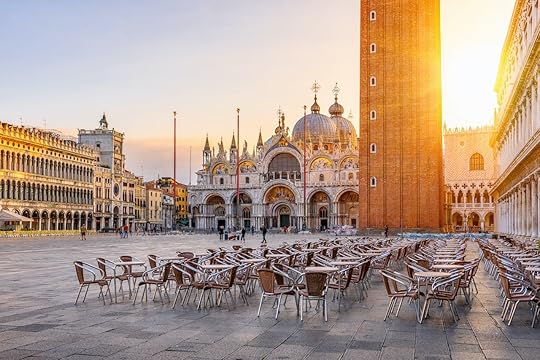
A true Italian coffee connoisseur should make a pilgrimage to Venice at some point in their life. Though many Italian cities have a reputation for serving exceptional coffee (we see you, Milan), Venice has a particularly strong connection to one of the world’s favorite caffeinated beverages.
Venice’s coffee history dates back to the end of the 17th century, when the first cafe, Caffè Florian, popped up in the Piazza San Marco. Italy has been hit particularly hard by the COVID-19 pandemic, and many of Venice’s most storied establishments — including Caffè Florian and the historic Harry’s Bar — closed temporarily. Close calls like these are scary, but they can also help travelers appreciate the historic institutions that are still around.
Whether you’re a coffee fiend or a lover of history, these are the historic cafes in Venice that should be on your radar when you visit.
1. Caffè Florian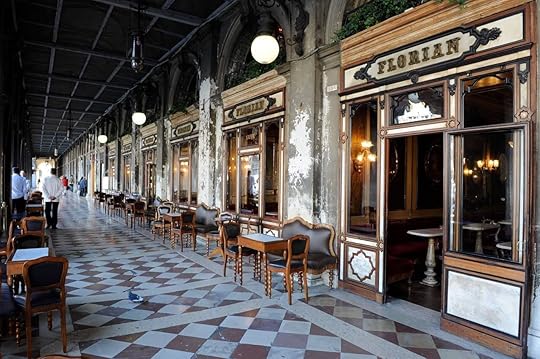
Photo: Caffè Florian/Facebook
Founded in 1720 under the name Alla Venezia Trionfante, Caffè Florian in Piazza San Marco is the oldest continually operating cafe in Venice. For centuries, the cafe has been known for its esteemed and noteworthy clientele, including Casanova, Goethe, Andy Warhol, and the Italian playwright Carlo Goldoni. Characterized by its elegant architecture and ornately decorated rooms, the cafe remains an important cultural center. It currently hosts a variety of exhibitions, meetings, and installations, though you can also grab a simple cup of coffee and just enjoy the ambiance. You’ll likely find musicians playing in the square in front of the cafe, adding even more to the atmosphere.
2. Caffe Lavena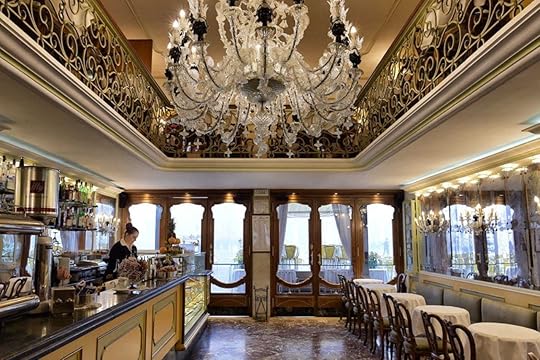
Photo: Gran Caffé Lavena/Facebook
With an origin story that dates back to 1750, Caffe Lavena is one of the best-known cafes in Venice and is located at the foot of the Clock Tower by the Basilica in the Piazza San Marco. Formerly known as Caffe dei Foresti (“The Foreigners Cafe”), it was particularly popular among international visitors and became a meeting place for anyone who got lost in Venice’s labyrinthine streets. The city’s gondoliers often stationed themselves outside the cafe to assist lost visitors and help them find their way home. It took the name “Caffe Lavena” in 1860 when it was purchased by Carlo Lavena, who maintained the original architecture and furnishings. The cafe remains a historic landmark.
3. Grancaffe Quadri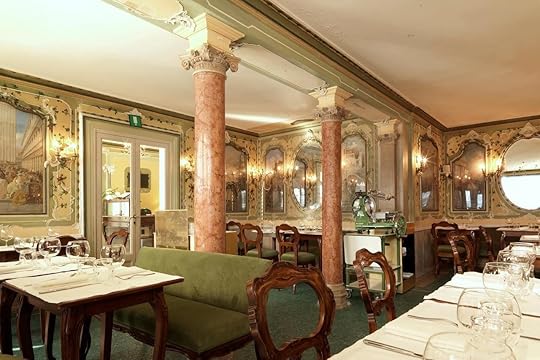
Photo: Gran Caffè Quadri/Facebook
Grancaffe Quadri has also earned historic landmark status and has been in business since 1775. It retains its 18th-century feel though it was renovated in 2018, and you can easily imagine artistic giants of the age like Lord Byron, Alexandre Dumas, and Marcel Proust calling the place home. The cafe is accented by pastel-colored walls and adorned with mirrors, floral decor, and murals of Venice painted by 19th-century artist Giuseppe Ponga. It remains a favorite among the Hollywood elite, especially those attending the Venice Film Festival. The cafe is known among tourists for options that cater to patrons with strict diets, including people who are lactose intolerant.
4. La Calcina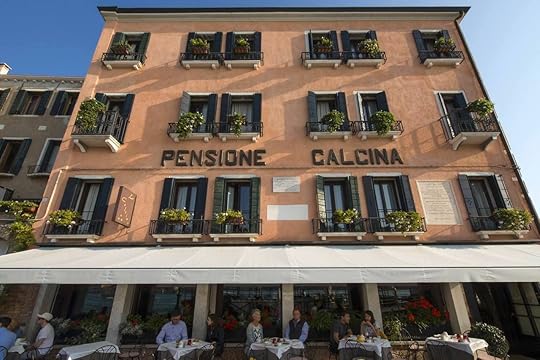
Photo: Hotel La Calcina/Facebook
In the neighborhood of La Zattere in the south of the city, you’ll find Caffe La Calcina, one of the most popular cafes in Venice for artists and writers to meet in the early 1900s. Its name derives from the warehouse of the limestone sellers located in the building in the 17th century, causing many boats carrying stones and lime to pass under the nearby bridge, known as Ponte della Calcina (“the lime mortar bridge”). The building became a guest house in the 20th century, and its cafe was often written about by the famous writers who stayed there. The building became Caffe La Piscina, named after the beach resort located there during the 1960s, but has most recently taken the form of a restaurant and hotel called Restaurant La Calcina. No longer strictly a coffee shop, the restaurant still retains the building’s old-world charm while serving up more modern amenities.
5. Harry’s Bar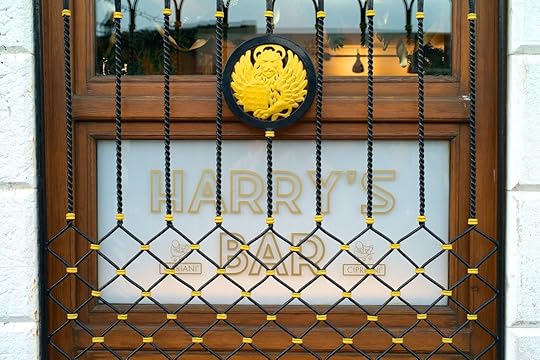
Photo: Dietmar Rauscher/Shutterstock
Harry’s Bar opened in 1931, and it was declared a national monument in 2001 by the Ministry of Cultural Heritage. While technically more of a bar and restaurant than a cafe, it’s worth a stop on any tour to sip a cocktail, enjoy a cuppa, and soak in the historical and cultural ambiance. Built in an old warehouse, Harry’s Bar is named for a wealthy young American named Harry Pickering, who had traveled to Venice and stayed at Hotel Europa. One day, Harry stopped showing up at the hotel bar, and bartender Giuseppe Cipriani asked why. Harry replied that drinking habits had bankrupted him, so Cipriani lent him $500. Two years later Harry returned to the hotel bar and gave Cipriani the equivalent of $4,500. At that moment Cipriani resolved to use the money to open a bar called Harry’s Bar. Serving alcohol as well as coffee, it became popular among artists, writers, and actors, including Charlie Chaplin, Orson Welles, and Truman Capote. It’s also the birthplace of the popular Bellini cocktail. 
The post 5 historic cafes that every coffee lover must visit in Venice appeared first on Matador Network.
Everest climber tells us how he survived the most terrifying day in climbing history

April 25, 2015, lives on in the nightmares of those who were on Mt. Everest that day, when a magnitude 7.8 earthquake rattled the Himalayas and ravaged the nation of Nepal. Among those to experience the single deadliest day in the mountain’s living history was mountaineer and author Jim Davidson.
In a new book, Davidson looks back at the terrifying events that he and a team of climbers with International Mountain Guides lived through on their ascent to the world’s tallest peak. The Next Everest: Surviving The Mountain’s Deadliest Day and Finding The Resilience To Climb Again, out now from St. Martin’s Press, details the harrowing events that transpired and his drive to get back to Nepal and stand on the peak he’s dreamed of for more than three decades.
“‘Should I go back to Nepal?’” Davidson tells us he asked himself in the earthquake’s long and painful aftermath. “‘Should I never even go climbing again?’”
Nepal hadn’t seen an earthquake of that magnitude in 81 years. Nearly 9,000 people died in Nepal, with scores more injured and devastation rocking the nation from the capital city, Kathmandu, to the countryside. The earthquake was equally tragic in the high country.
On that day, the earth underneath the world’s tallest mountain range shifted, scraped, and resettled, triggering a series of massive avalanches in the Upper Kumbu Valley along the route used by climbers to summit Everest from the Nepali side. One avalanche tumbled down the side of Pumori, a 23,494-foot behemoth of a peak that overlooks the basecamp used by the IMG climbing expedition that year.
The camp was destroyed, overrun by ice debris. Other avalanches slid down the West Shoulder, a ridge above the Khumbu Icefall that stands at around 23,000 feet between basecamp and Camp One. Davidson and his team were trapped at nearly 20,000 feet, unable to reach higher ground or descend to safety.
For two days, Davidson and his team huddled in and around their tents, waiting for rescue. Passage in or out was impossible, even with a fully equipped mountaineering unit. By the time the plumes and ice of the Gorkha earthquake had settled and the crew was finally rescued via helicopter, 19 climbers had lost their lives.

Photo: Jim Davidson
Davidson spent two years putting his experiences into words. The book is at once an inspiring narrative of triumph over trauma and a spiritual guide for how to accomplish such a thing. He recounts the experiences and how he sought to help Nepal, both through volunteer efforts on the ground and through fundraising initiatives back home in Colorado.
Along the way, the author addresses common rumors surrounding Everest, including the presence of trash and bodies on the mountain (not as bad as it’s made out to be), how the Nepalese government is handling over-tourism (not well), and whether or not anyone with the financial means can show up and summit Everest (they can try, but most won’t succeed).
“I wanted to show the non-climber what it was like to climb Everest now,” Davidson says. “I wanted it to be a visceral experience — I needed to bring to life all those sensations of cold and fear and avalanche risk.”
There was nobody better to tell the tale. Davidson has spent over 30 years climbing peaks around the world after being turned onto wilderness excursions as a teenager. Much of his climbing is done in the high alpine, where avalanche risk is a constant threat.
“I was shook up like everyone else that was on the mountain and in Nepal,” Davidson says. “We helped out however we could … This was a major, scary setback for me, and everybody else. It doesn’t mean I should necessarily quit, but I do need to ask myself, ‘If I go back, am I putting myself back into the lion’s mouth?’”

Photo: Jim Davidson
After witnessing such a horrific event firsthand, and having his dream stripped away when he was just days from securing it, Davidson considered quitting climbing for good.
He ultimately decided that overcoming the shock and fear that resulted from his experience was the only path forward. He focused his mental attention on dissecting what happened and how he had reacted, and pivoting that knowledge towards making himself stronger, both mentally and physically.
One lesson Davidson took from the experience is that we are dependent on those around us, often far more than we realize. Climbing is not a team sport in the vein of tennis or baseball, but to be a good climber — and a good friend or relative — is to be someone others can trust with their lives. One Everest summit is the result of groups of people coming together to accomplish something great.
“Try and become a partner that other people would want to climb a big mountain with,” Davidson says, both as advice to aspiring mountaineers and as a mantra to live by. “Figure out all the skills you need. Become highly proficient at some, and reasonably proficient at them all.”
He also put his skills as a geologist to use, analyzing the strain on the plates — which had increased following the 2015 quake — to determine the likelihood of another major earthquake happening while he was there. The odds were low.
“From a traumatic situation, if you think about it long enough you can distill some wisdom, some lessons, some strength, and actually make yourself better equipped to handle something scary down the road,” Davidson says. “That’s what I call ‘post-traumatic growth.’ I didn’t want that thing, I didn’t like that thing, but how can I use that thing to make myself either a better person, a wiser person, or a better teammate.”

Photo: Jim Davidson
The book’s title is of dual purposes. Davidson returned to Everest in 2017 after the sleepless nights and bouts of trepidation had caved to raw desire. But it is also a metaphor for life and the never-ending, seemingly insurmountable challenges that present themself along the way.
“To my right the rising sun pushed waves of orange and pink ahead of its arrival,” Davidson writes in The Next Everest “To my left the western sky was releasing its gentle grip on nighttime and starlight.
“A deep satisfaction flowed through me. After each step I stopped to stretch out the final minutes of summiting and to savor my dream coming true. I wanted to feel all the joy and experience every second of awe.
“My head rose higher than the final snow mount and I saw over the mountaintop, far into Tibet. After two more gentle strides, at 4:19 a.m., I stopped and embraced PK.”
After 35 years of dreaming, training, and planning, this Everest had been met. Now it’s on to the next one, carrying forth the indelible spirit of the climber. 
The post Everest climber tells us how he survived the most terrifying day in climbing history appeared first on Matador Network.
Denver’s Marijuana Mansion is the most glamorous cannabis experience you can have

Walking through the Marijuana Mansion is like strolling through a world where a photo-friendly cannabis experience is as acceptable as an Instagram-ready Museum of Ice Cream — even though marijuana isn’t even legal everywhere in the United States yet. The building has more than 4,200 square feet of space spread out over three floors and 11 rooms. In one, a swinging chair hangs from the ceiling of a room covered in fake cannabis leaves with a neon sign that reads “High Life” positioned between the swing’s ropes. Another is a speakeasy-style poker room, while close by there’s an art-covered room that’s accessible through a hallway lined with neon-colored trees.
A recent event at the Marijuana Mansion in Denver came complete with servers carrying platters of pre-rolled joints and edibles to consume inside. This might not be what cannabis enthusiasts thought a world where recreational weed is easily accessible would look like, but it’s safe to say the Marijuana Mansion doesn’t disappoint — both from an aesthetic perspective and a historical perspective.

Photo: Jacqueline Collins
The building where the Marijuana Mansion is located has been on the National Register of Historic Properties since 1977, but not for anything to do with cannabis. It was built for the wealthy businessman Joseph Creswell in 1889 by Denverite architect John J. Huddart. The Queen Anne and Romanesque Revival architectural influences helped earn its historic registry position.
The building would earn a spot on the National Register of Historic Cannabis Properties as well if there were such a thing. It was the headquarters of the Marijuana Policy Project, which started in Denver and moved to Washington DC. It’s also where Amendment 64 was written, which, when passed, legalized recreational cannabis for the first time in the US in 2012.
Aside from the history, there’s the Instagrammable rooms, cannabis history, and art aspects to experience. Lisa Leder purchased the house in 2019 and gave each of the 11 rooms a distinct cannabis theme with an all-women team of artists and creators.

Photo: Marijuana Mansion
Experiences like these are popping up more and more as the country starts to open back up and an increasing number of states legalize recreational cannabis. For example, Planet 13, a two-store chain of mega dispensaries that double as art experiences, recently opened its Los Angeles area location. The business already has plans to include a 13,000-square-foot consumption lounge in future expansions.
Still, it’s illegal to consume cannabis in public spaces or in areas where tobacco is prohibited in many recreational states. And where it is legal, businesses have a hard time securing a license. Public consumption licenses are available in Denver, but businesses must be 1,000 feet from daycare centers and drug rehabilitation centers — something that can be hard to do in the densely packed urban core.
“Every state has its own challenges,” says Kim Stuck, CEO and founder of Allay Consulting. “In most states the challenge is over-regulation. For instance, in Denver, they put out consumption laws, and then only two locations in the city of Denver could open at all. The regulations were so strict that it made it impossible for anyone to get a location, a license, or operate.”
Compare that to places like Nevada, where lawmakers are working on a framework for legal consumption sites that work for tourist-heavy cities like Las Vegas and Reno.
The laws are frustrating for retailers as well as travelers interested in sampling some legal weed. Limiting where people can legally consume also limits who can comfortably partake.
“What’s most frustrating is the inability to get Ripple [cannabis products] in front of everyone we want to,” says Kate Dwyer, general manager of the cannabis brand Ripple. ”We support the ‘regulate like alcohol’ narrative and would like the opportunity to sample 21-plus consumers at events such as concerts or festivals, the same way alcohol brands are able to.”
Until that happens, consumers have to find workarounds like cannabis-friendly Airbnbs or hotels. Smoking is out of the equation since few states allow smoking indoors, and outdoor spaces are usually classified as public. That said, there’s been a lot of innovation in discreet edibles that are easy to pack along on a day trip. Ripple’s dissolvable THC powders easily mix into food and drinks, for example, and the brand’s quick-hitting edibles come in five-milligram gummies.

Photo: Jacqueline Collins
That’s one reason why the presence of the Marijuana Mansion is so notable: it seems to exacerbate the tension between marijuana’s increasing popularity and the efforts to make it more accessible. Marijuana Mansion has run into its own issues with getting a public consumption license. The building sits just under 1,000 feet from a daycare facility, meaning that unless the laws change, the Marijuana Mansion can’t be a public consumption spot.
Private parties, events, and photoshoots, however, are fair game.
“There was a bit of a shift late last year, and January and February this year, where we slowly started to reopen,” April Emma, Marijuana Mansion’s event director, says. “We started doing tours with smaller groups. Then we started doing photoshoots as well, and then as things progressed we slowly started ramping things up.”
Recently, Emma says, the mansion has been a popular place for cannabis companies to throw parties for their employees. The building is open to reserve for dinners, events, and any other type of private party for up to 100 guests — and they can consume on-site since the events are private.

Photo: Marijuana Mansion
Even if you don’t make it to a private party or get to be part of a photoshoot, the Marijuana Mansion is still worth a visit. You can see the rooms for yourself, take cute shoots for social media, and learn more about the history of the building and cannabis culture on a 30-minute Marijuana Mansion Experience tour. While you can’t consume on the tour itself, the well-known dispensary chain Green Dragon has a location in the carriage house at the back of the property if you’d like to stock up before or after your tour.
Regardless of how you see it, the Marijuana Mansion deserves a stop by any cannabis-curious traveler, public consumption laws be damned. 
The post Denver’s Marijuana Mansion is the most glamorous cannabis experience you can have appeared first on Matador Network.
As travel reopens, it’s time to rethink how we talk about unfamiliar foods

As a Singaporean living in London, I’d usually be in Southeast Asia this time of year, visiting my family and tucking into the food that I still can’t find in the British capital. One of those dishes is mama’s (my grandmother’s) congee, which has been a fixture in my life since I was a kindergartener. Not wanting to miss my fix, I’ve been calling mama on FaceTime and watching her prepare it. A base of warming rice and a sprinkling of spring onions envelops the star ingredient: slices of soft, creamy, gelatinous century eggs. Throughout my life, it’s always been a balm for everything from bad weather to bad mood.
Perhaps because of my attachment to this comforting dish, I was pained to find out that it has been demonized in Western media. A recent petition by Filipino American Kim Saira alerted me to “Spill Your Guts or Fill Your Guts,” a segment of James Corden’s popular late-night talk show that’s been running since at least 2016 where he gives his celebrity guests a choice: Answer difficult questions about their personal life or choose from an array of foods he describes as disgusting and horrific. Saira noted how many of the featured foods were Asian in origin and called for the segment to be cut from the show and for Corden to issue an apology.
Watching the segment for myself, many of the foods caught my eye as he spun the lazy Susan under the glaring lights of the late-night studio. There was a scorpion similar to one I ate during one of my trips to Cambodia after a college friend introduced me to it. Also roasted grasshoppers like those I ate in Thailand as another friend’s grandmother shared her story of selling them as a street vendor in her 20s. And closer to home, a bowl of fish eyes made me recall family dinners in Singapore where the main course is often a tilapia or garoupa nestled in a light, comforting ginger broth. As a child I would get first dibs on the eyes, excitedly participating in the ritual of scooping the gelatinous bulbs onto my bowl and dabbing them lightly in chili-infused soy sauce.
These are cherished memories for me, but here they were, recontextualized by Corden as disgusting foods that (usually white) celebrities wouldn’t dare touch without gagging. The sampling of unfamiliar food should be a positive culinary adventure, one that includes an open-minded embrace of the nuanced culture that created the dish in question. Yet Corden has stripped away the pleasure that comes with experiencing new flavors and ingredients for the sake of a few cheap audience gasps.
While you might consume deep-fried or grilled cod sperm in a Japanese feast, for instance, in Corden’s studio, it’s framed as an outlandish and barely edible object designed to maximize the ick factor (he has a particular obsession with smoothie-fying everything, for one). To exploit animal parts for gross-out laughs reminds me of the fetishistic way many Western museums and art galleries line their plain white walls with cultural artifacts without context: simply displayed as yet another exotic artifact to gawk at.

Photo: Cubankite/Shutterstock
“Spill Your Guts” is, sadly, far from an isolated instance of food racism on television. The much-beloved reality cooking series The Great British Baking Show faced backlash last October when, during Japanese Week, judge Matt Lucas of Little Britain fame made gleeful references to katsu curry as “cat poo” curry, amongst many other instances of cultural insensitivity.
The following month, the Australian Broadcasting Corporation aired an episode of kids comedy show Horrible Histories featuring a sketch where a Chinese empress consumes rats as food. Despite being met with swift backlash, no apologies were issued in these instances. Corden issued a statement insisting that he didn’t mean to “upset” anyone and pledged to stop using “those foods” in his segment. Saira received death threats after posting the petition of Corden’s segment online.
The racism baked into Western media shouldn’t be surprising, given that it can be easily traced to a long history of anti-Asian sentiment in the West. Food has been a highly effective way to other people from the continent, from the demonization of MSG to the tendency to characterize Asian restaurants as unhygienic.
The global pandemic has exacerbated anti-Asian racism in horrific ways, making scapegoats out of Asian people and in particular East Asian food culture, which has been alternately described in the media as bizarre, strange, and barbaric, and infamously as the cause of the coronavirus outbreak. But humor that equates Asian cuisines with disgusting food reeks of a lazy and offensive stereotype that perpetuates the belief that Asian people are primitive and unclean. Shows like Corden’s push these stereotypes to a large audience who likely have no familiarity with the nuances of Asian food and culture.

Photo: Baiterek Media/Shutterstock
It’s not just television that’s to blame for these stereotypes. Look up any of the foods Corden has featured on his segment, and you’ll realize that they’re similarly described on travel blogs. Descriptors like “awful,” “weird,” and “disturbing” come up most frequently on backpacking, expat, and other websites to describe what are delicacies for many Asian people and staples for others. Saira’s petition is a timely reminder for all of us to interrogate how the wider conversation around unfamiliar foods continues to fail Asian cuisines.
After a year of restricted travel, many are looking up long-haul flights. But before you pack your bags, consider that as travelers, there is an unspoken duty to care how one talks about the food they encountered on their journey, and that we all have a responsibility to portray unfamiliar dishes accurately and sensitively. Remember above all that travels grants you the extraordinary opportunity to participate in a culture, not gawk at it. You don’t have to like everything you eat, but you don’t have to degrade it either.
People have preferences, and that’s absolutely fine. But consider how much of what you supposedly love to eat is the result of Western preconditioning, and how what you don’t like may stem from years of hearing a dish labeled as disgusting on television with no deeper interrogation of its cultural context.
As you embark on your next voyage, here’s a challenge for you: approach cuisines with an open mind and innate curiosity. Because if you can get past people like Corden and his celebrity friends telling you certain foods are weird and awful, then you’re in for a treat. There’s a world, quite literally, of food histories and culinary adventures waiting to be unlocked. You’ll find that so much of it is misrepresented, and so much of it is delicious. 
The post As travel reopens, it’s time to rethink how we talk about unfamiliar foods appeared first on Matador Network.
The best and worst cities for first-time homebuyers in the US in 2021
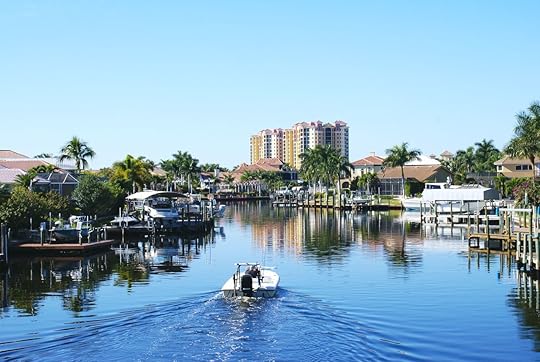
Right now probably isn’t the best time to buy a house, unless you’re rolling in expendable income. Housing prices are soaring and many homebuyers are reporting having to offer $50,000 to $100,000 above asking price to even be considered. Many first-time homebuyers nevertheless remain undaunted. According to WalletHub, there are 14 percent more people looking to buy a home now than last year, which is why they put together a list of the best and worst cities for first-time homebuyers. The finance site looked at 22 key metrics to create the list, from affordability to crime rate, quality of life and property taxes.
These are the top 10 cities for first-time homebuyers:
Chesapeake, Virginia Gilbert, Arizona Lincoln, Nebraska Cape Coral, Florida Boise, Idaho Hampton, Virginia Peoria, Arizona Virginia Beach, Virginia Norfolk, Virginia Surprise, ArizonaMeanwhile, these are the bottom 10 cities:
Boston, MassachusettsBurbank, CaliforniaGlendale, CaliforniaSanta Barbara, CaliforniaSan Mateo, CaliforniaLos Angeles, CaliforniaSanta Monica, CaliforniaSan Francisco, CaliforniaOakland, CaliforniaBerkeley, CaliforniaNotice a trend? Though Massachusetts managed to sneak into the bottom 10, California is overwhelmingly the worst place to buy a house right now due to the astronomical costs. On the other side, first-time homebuyers might want to zero in on Virginia and Arizona due to their general affordability and relatively high quality of life. 
The post The best and worst cities for first-time homebuyers in the US in 2021 appeared first on Matador Network.
Get on the water in Myrtle Beach

The Grand Strand of Myrtle Beach comes by its name for a reason: 60 miles of uninterrupted beaches unfurl along avenues of incredible seafood restaurants, live music venues, strollable boardwalks, boutique shops, and artsy hotspots.
But for many of the area’s 20 million annual visitors, the beach is enough. Some come to relax and unwind on the sand, while others look to ramp up their daily adventure quotient with a different kind of vacation. One that takes place almost entirely on the water.
Or above it. Through it. In it. From the speed of a sunrise stroll to making your own 45mph waves, if you’ve got that appetite for adventure, here’s how to spend your days on — and off — Myrtle Beach.
1. Strolling for shells and surfing the waves
Photo: Stacie Stauff Smith Photos/Shutterstock
It’s easier to be an early riser in a place like Myrtle Beach. Set the coffee-maker, get a jump on the crowds — and that crowd-free sunrise — and you’ll win first dibs on the high-tide deposits of seashells lining the shore.
You can stoop and sift just about anywhere on the Strand, but Huntington Beach State Park and Myrtle Beach State Park both reliably pile up the lettered olives, heart cockles, and coquina clams. If you’re really lucky, perhaps you’ll find a large fossilized shark tooth from the long-extinct megalodon.
By the time you’re finished, the surf has probably rolled across your feet once or a dozen times — notice how warm it is, courtesy of the Gulf Stream. Grab a skim or bodyboard and enjoy the waves as they methodically break approaching the beach. Or just cool off with a quick dip before returning to your chosen spot of lounging, anywhere on this sandy, 60-mile stretch.
2. Flying hundreds of feet above the water
Photo: J_UK/Shutterstock
Imagine seeing drone footage play out before your eyes — that’s what it feels like to parasail. Tethered to a boat that traces the shores of Myrtle Beach, you’ll zoom through the air above the water, taking in the horizon and whatever wildlife’s popping up through the waves (watch for large manta rays, sea turtles, and dolphins in particular).
And unlike skydiving, parasailing (not to be confused with paragliding) doesn’t require any training, special preparation, or skillful maneuvering. Once you’re out to sea and safely harnessed in, your pilot boat will speed off, and you and your canopy will gently lift hundreds of feet above the water, gliding with the wind. You have little control over the parasail — just hang back and enjoy the ride. Eventually, you’ll get reeled back to two-legged reality.
3. Jetting across the open ocean
Photo: YanLev/Shutterstock
The Atlantic’s Intracoastal Waterway — 3,000 miles long, made up of creeks, rivers, and canals — wasn’t purpose-built for jet skiing…but it might as well have been. At least when it comes to the length that runs along the Grand Strand. Here, where warm waters roll, rentals are widely available for both short-term thrill rides and all-day, 45mph adventures up and down the coast. Bring a hair tie.
There are two ways you can’t go wrong: Scream across the open ocean as envious onlookers watch from the beach, or take to the quieter rivers and waterways. For those looking for guided instruction, consider booking an inland tour, where you’ll likely be joined by some of the area’s native wildlife.
Note: You must be at least 18 to fly solo, and all drivers need a valid government ID.
4. Paddling along marshes and tidal creeks
Photo: Visit Myrtle Beach
Kayaks and standup paddleboards can get you to areas often inaccessible to other watercraft. Salt marshes and tidal creeks often hide eye-catching bird species, too, like oyster catchers, egrets, and herons. Here are a couple places worth gliding through:
The Waccamaw River, over 140 miles long, makes its final push through the Grand Strand. Its mellow flow is great for beginners or those just looking to slow things down a bit. Along its lower portion, watch for old rice fields and historic plantation homes. And as you float past the centuries-old cypress trees, keep your eyes peeled for shy black bears and frisky river otters.You’ll catch loads of the world’s favorite feathered aviators at Huntington Beach State Park, slicing silently throughout the salt marshes in a kayak or atop a SUP. This quiet, human-powered mode of transportation makes it more likely to spot kingfishers, egrets, herons, eagles, and osprey — perhaps before they spot you.5. Practicing your angling skills
Photo: jamestheredd/Shutterstock
Does it need to be said that fishing reigns supreme here in the “Seafood Capital of South Carolina”? Probably not. And while no catch is ever guaranteed, local captains know the area and what’s bound to be biting — and where — in this angler’s playground. All you have to do is ask around.
…Or just cast a line off one of the ten fishing piers that run from Cherry Grove to Garden City. Some have been attracting anglers for nearly 70 years — and some even boast world-record catches. In addition to providing effortless access to the water, the piers offer a place to acquire gear, bait, and licenses. (And pro tips, if you’d like ’em.)
For true professional guidance, consider chartering a local guide. They can cater your trip to your experience level and often up your odds of reeling in the “big one.” Local charters up and down the Grand Strand can take you angling for Spanish and king mackerel, trout, flounder, cobia, wahoo, and tuna, just to name a few.
Note: Kayaks give you the ability to troll the inshore waterways in search of a bountiful harvest. Rental options abound, as do kayak-fishing guides who can set you up for a successful outing.
6. Finding your pod — of dolphins
Photo: Tory Kallman/Shutterstock
Move over, SeaWorld. In Myrtle Beach, local guides take you where dolphins are likely to be feeding and frolicking in their natural habitat. No pools or zoos here, just you and a symphony of whistles, clicks, and splashes.
Atlantic bottlenose dolphins, in general, aren’t shy or easily intimidated. Jet ski tours provide the quickest route to possible sightings, while kayak tours get you the most up-close and personal experience — imagine gliding along with them at water level. Tour boats provide an accessible-for-all experience, you and your crew leaning over the edge to peer into the blue world below you. Just one of the many Myrtle Beach water activities waiting to be experienced this summer. 
The post 6 awesome ways to enjoy the water in Myrtle Beach, SC appeared first on Matador Network.
Matador Network's Blog
- Matador Network's profile
- 6 followers



